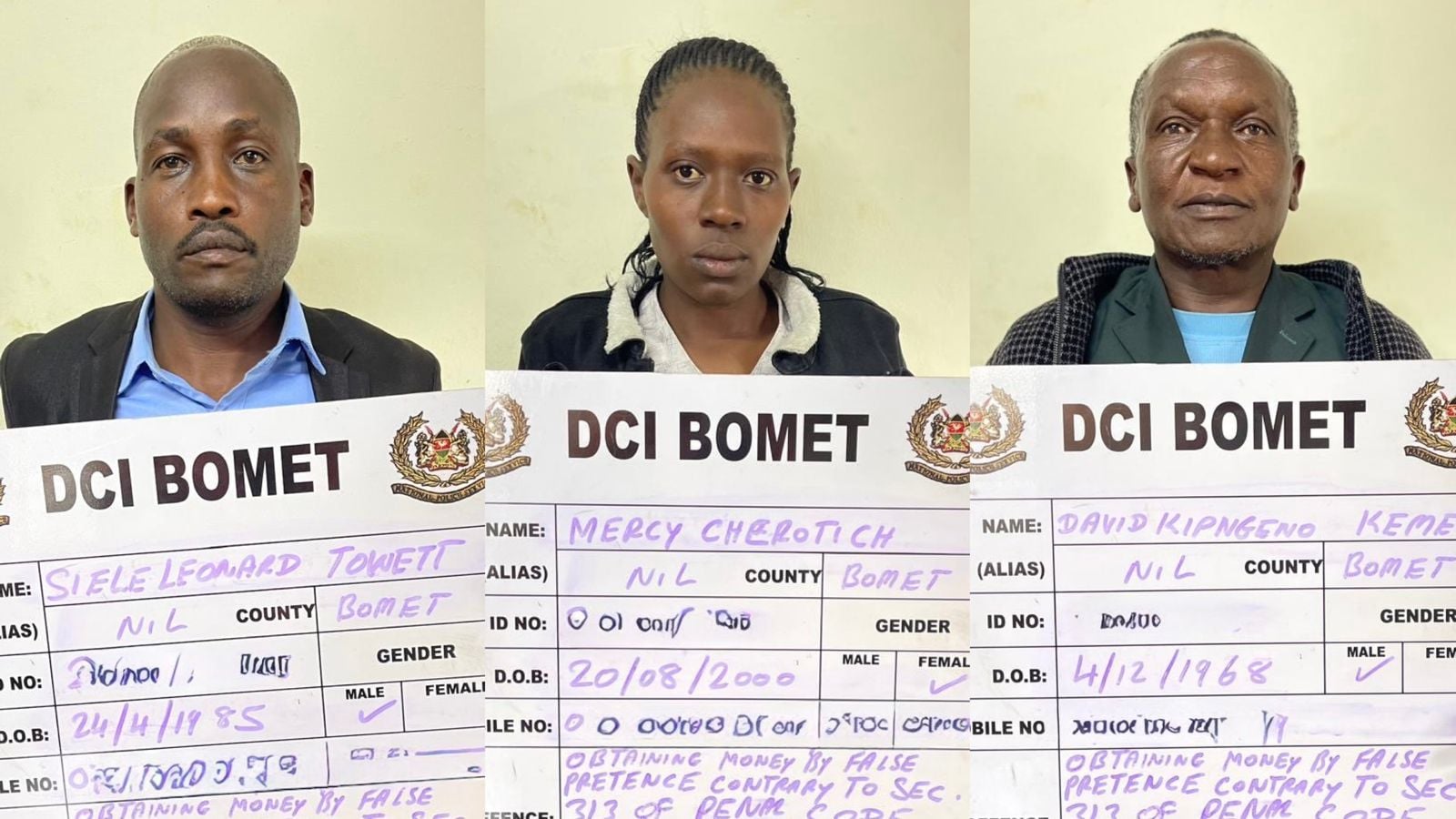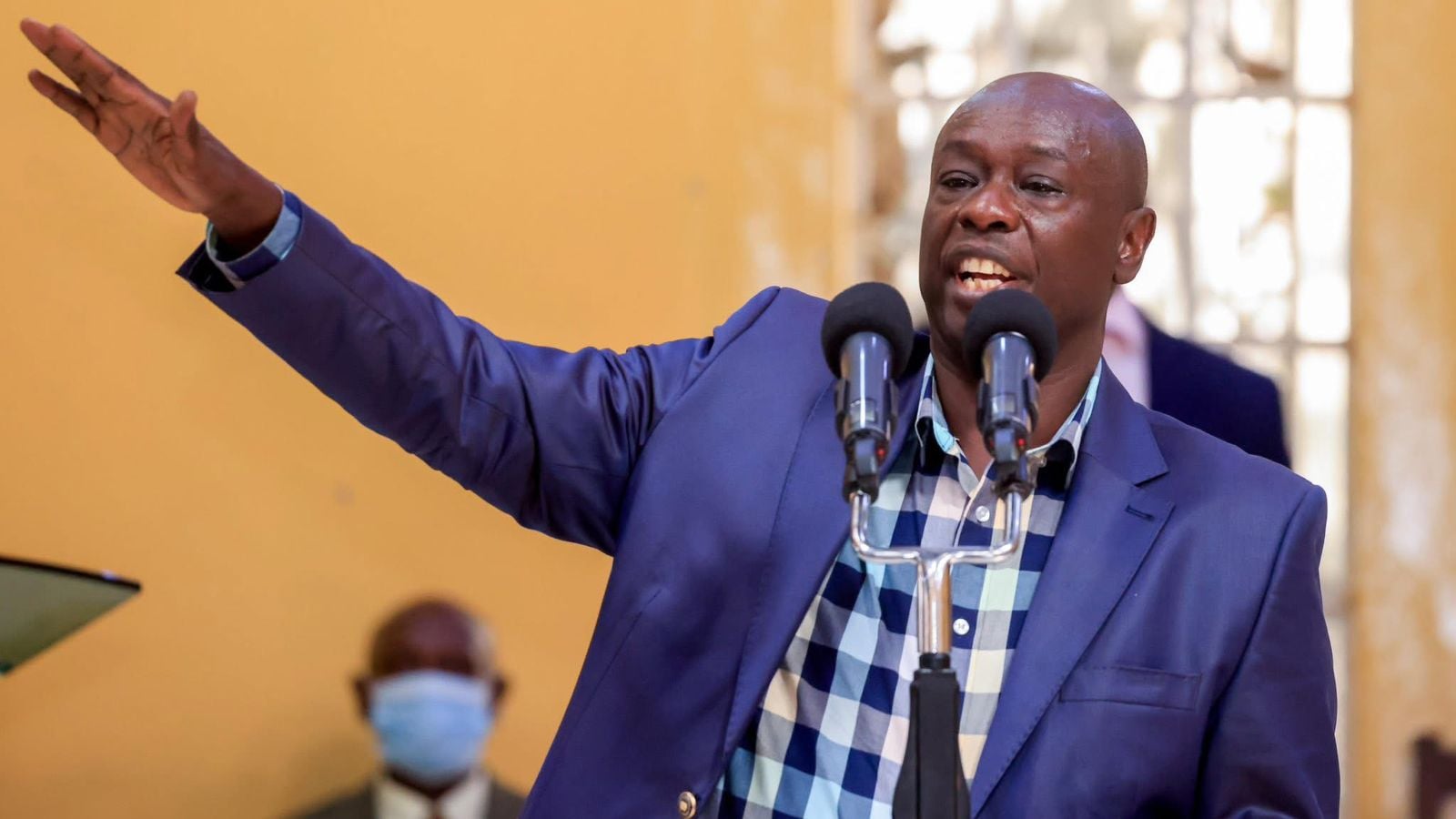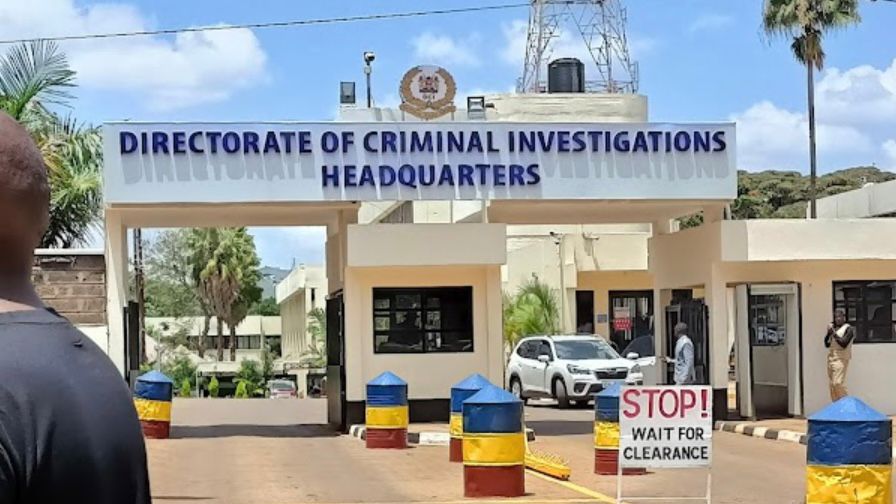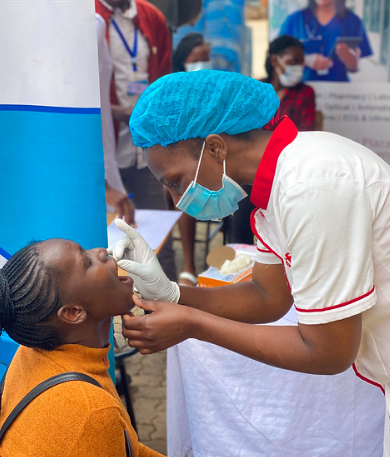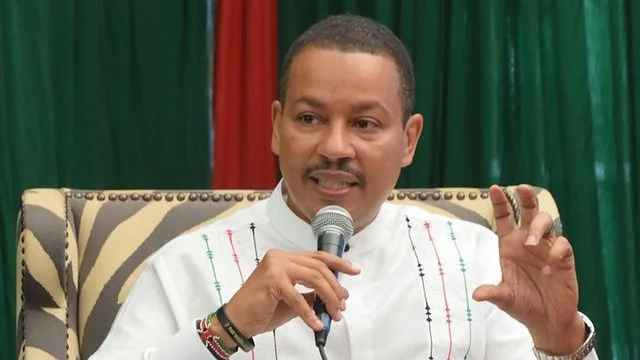According to the National Council for Population and Development, unemployment is a major crisis in Kenya, especially among the youth, who form more than a third of the country's population.
The Federation of Kenyan Employers documents that youth in Kenya have the highest unemployment rate of 67%. It further notes that every year, more than a million youth enter the job market, either unskilled, as some drop out of school or fail to pursue higher education due to financial constraints.
In addition to the high unemployment rate, the global economic turmoil over the past two years has left the economies of several countries, including Kenya, significantly contracted. Some groups hugely affected by the financial crisis are the youth, especially those in casual work, who are earning low incomes and relying on daily wages.
Cognisant of the above, the government has put together a program that seeks to leverage sustainable Extended Public Works Projects (EPWPs) to provide employment and daily wages to these vulnerable youth while enhancing urban infrastructure, service delivery, and sustainability and climate resilience in urban, rural, and peri-urban areas.
What is Climate Worx?
Read More
The Climate Resilience Service Program (CRSP) initiative, dubbed "Climate WorX," is an employment transition program for youth in Kenya that aims to foster climate resilience and economic recovery by addressing critical needs across the roads and infrastructure, environmental, housing, and urban development sectors.
The program seeks to utilize labour-intensive approaches to create sustainable public goods while promoting economic recovery by stimulating funds circulation within various locales.
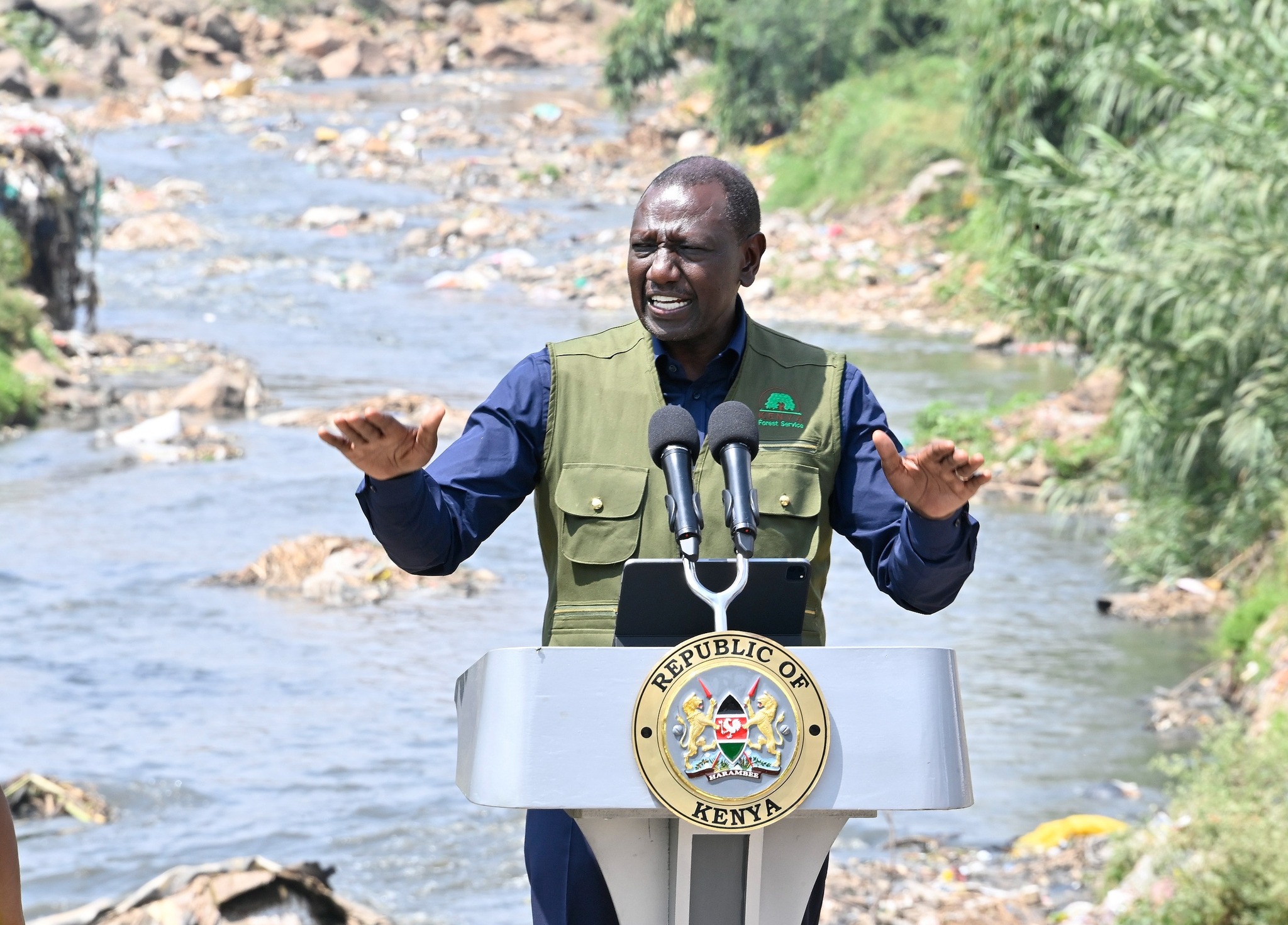
What is the aim of Climate Worx?
The program seeks to employ 200,000 youth from 47 counties. Each county is expected to have a minimum of 1,500 beneficiaries. The youth will be engaged for one year, after which they will transition to other opportunities that life will throw at them.
The engagement period was set at one year to provide sufficient time for the beneficiaries to learn, acquire new skills, and decide which area they want to focus on, even as they transition into employment, entrepreneurship, or further education.
How Will it Work?
The program will utilize a double shift methodology, where two cohorts of recruited youth will work on alternate weeks. This means one group will work for two weeks while the other is off and vice versa.
The shift system is meant to maximize labour use. The available funds would cover twice the labour cost of the number of beneficiaries had they worked only one-month shifts.
During their off period, the recruits will be required to attend life skills training and explore other opportunities they may pursue after the program.
The recruited youth will receive Ksh 500 daily compensation, while their supervisors will receive Ksh 550. The payment will be made via mobile money transfer at the end of the two-week work shift period.
The government expects that at the end of the program, the recruits, through their work clusters, may form groups and community-based organizations (CBOs) that can begin to organize themselves into sustainable businesses.
Key Activities to be Conducted Under Climate Worx
The activities to be undertaken have been broadly classified into three main groups: roads and infrastructure, environment and housing, and urban development.
A roster of activities will be conducted in the three groupings. The areas were selected due to their ability to leverage existing infrastructure, suitability for labour-intensive implementation, relatively low implementation risk, and limited initial investment requirements, among other reasons.
Roads and Infrastructure
The main focus here is to improve roads and infrastructure while enhancing the environment and promoting climate resilience. The three activities listed under this category are labour-intensive road construction, greening/beautification, and maintenance and clean-up programs.
The first activity will involve recruits in labour-intensive road construction and repair. This will enhance road infrastructure while generating employment for youth across the country.
In the second activity, the youth will landscape and green highways and roadways. By increasing green coverage, the youth will play a crucial role in mitigating the impact of climate change.
The last activity under this category centers on maintaining highways and roadways by clearing bushes, unclogging drainage, and cleaning streets to maintain cleanliness and functionality.
Environment
This sector comprises several activities revolving around tree growing, critical in enhancing climate resilience.
The main activities are tree growing—tubing, where the recruits will be required to tube at least ten seedlings every morning; tree growing—nursery development, which involves developing and nurturing tree nurseries that will provide seedlings for planting in rehabilitation projects; and tree growing—stewardship, which focuses on nurturing planted seedlings to prevent tree loss and ensure their successful growth.
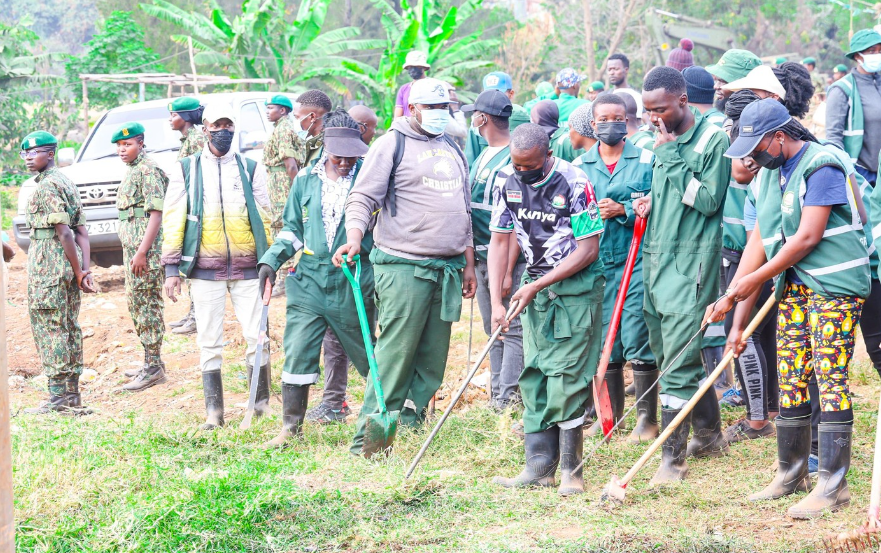
Housing and Urban Development
This category will focus on housing and activities related to improving urban areas' sustainability. The first main activity will be the rural housing construction program, where the recruits will construct low-cost buildings using Interlocking Stabilized Soil Blocks (ISSBs). This offers affordable housing for rural homeowners and also reduces environmental impact by using locally sourced materials.
Another critical activity under this category is the Nairobi River Commission's rehabilitation of riparian areas, which focuses on creating small park buffers, paved walks, green spaces, and pocket parks along existing rivers, as outlined in the master plan provided by the Nairobi River Commission.
This activity is essential because restoring riparian areas will help mitigate the negative impacts of urbanization on natural water systems. Those involved in the activity will learn environmental and conversational skills to utilize in other projects related to creating sustainable green spaces in urban areas.
In addition to the above, the program beneficiaries will also participate in a solid waste management program, where they will collect waste from homeowners and transport it to designated sites, where it can be recycled and processed into goods that can be sold in different markets.
Those working in this area can be organized into CBOs, which can then charge homeowners for garbage collection services in cities and other parts of the country.
The last activity under this category is the Affordable Housing Project (AHP) Jua Kali Program, which engages local artisans in supplying locally made materials for AHP sites. This will ensure those working in the Jua Kali industry have a consistent demand for their work because AHP will require fittings and other materials made from the Jua Kali industry.
Who Will Implement Climate WorX?
Climate WorX will be implemented by different government agencies such as the State Department for Roads (SDR), the Kenya Urban Roads Authority, KURA, the Kenya Rural Roads Authority (KeRRA), the Kenya National Highways Authority (KeNHA), the Kenya Forest Service (KFS), the State Department for Environment (SDE), the State Department for Housing and Urban Development (SDHUD), Nairobi River Commission, the State Department for Youth (SDY) and the State Department for Post Training and Skills Development (SDPTSD).

